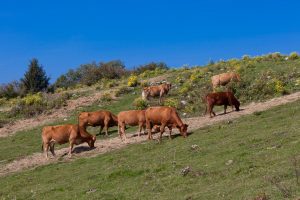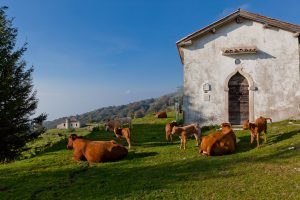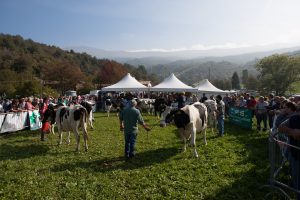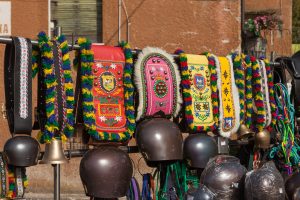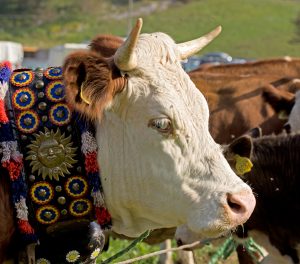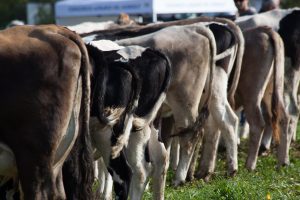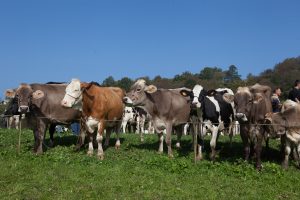Pastoralism on Monte Baldo dates as far back as the Copper Age (at the end of the 4th millennium BC) and the Bronze Age. Small local communities began to bring their herds from the plains and hills up into the mountains to pasture, as they also hunted and sought shelter underneath natural stone outcroppings that had previously been used by hunter-gatherers during the Mesolithic.
In Roman times and in the Early Middle Ages, pastoralism became a consistent practice on Monte Baldo, particularly with sheep and goats, and on occasion cows. Vertical transhumance developed during this time along the traditional routes from Caprino up to the mountain pastures and ridges, and then descending back down into the Adige Valley.
This transhumance would begin on April 23rd, the day of Saint George. The day beforehand, shepherds would perform purification rituals for their herds that were tied to the ancient Roman religious tradition of Palilia, a propitiatory and expiatory festivity.
Typical of the area was the hardy Brenténega sheep, which could thrive on the sparse high-elevation meadows of Monte Baldo.
Cattle farming began to grow in the 17 th century thanks to technical and qualitative improvements introduced by local nobility. This trend, however, came at the expense of sheep and goat farming, which became more and more marginalized and confined to higher elevation, less accessible areas.
It’s in this time period (17 th-18 th centuries) that the current malghe began appearing, with the construction of large stone baiti (generally with square floor plans) which replaced the old casàre of the 15th-16th centuries. With the construction of these new cheese-production facilities, the traditional bovine transhumance routes were laid out. Cows were, and still are today, lead up to alpine pastures between the end of May and the beginning of June, depending on the winter climate. From lower-elevation contrade, the cows would climb along pastoral routes towards the mountain. The malghesi (farmers who herd cattle to a malga) would split their time in the summer months between the open-air pastures and the buildings at the malga. Their schedules were repetitive and strictly dictated by fixed rules and activitie.
The months spent on the mountain is interrupted by a few traditional holidays, such as Terza de Lujo (the third Sunday of July), Madonna della Neve on August 5th, and Saint Bartholomew on August 23rd. In September, then, it comes time for the malghesi to draw their conclusions on the season. Another popular festivity is that of Saint Eustace, held every year in the Monteselli church on September 20th.
At this point, it’s time to prepare for San Michele (Saint Michael), on September 29th, which traditionally signals the end of the summer pastures, and all the herds begin their descent toward their winter home, passing through Prada’s market-fair along the way.
